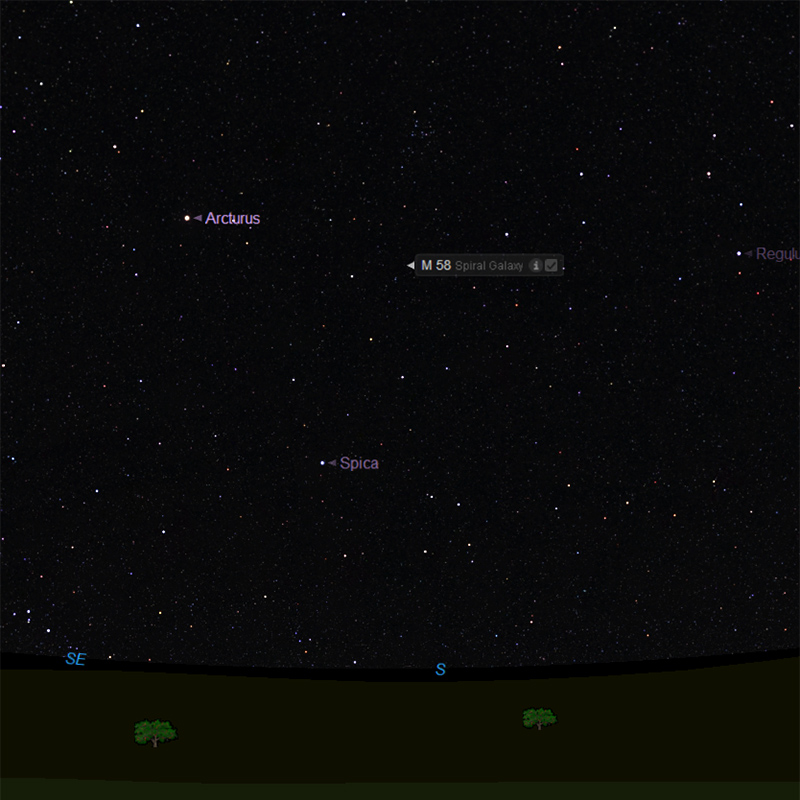M58

Credits: Adam Block/Mount Lemmon SkyCenter/University of Arizona
In spite of its distance, M58 can be seen in large binoculars.
In small telescopes, which only reveal the galaxy’s bright centre, M58 appears similar to elliptical galaxies found in the Virgo Cluster.
4-inch and larger telescopes show the galaxy’s halo, while 8-inch telescopes reveal a hint of the galaxy’s bar. The best time of year to observe M58 is during the spring.
The active galactic nucleus of M58 has a low luminosity.
The galaxy’s core may have some starburst activity and is believed to contain a supermassive black hole with an estimated mass of about 70 million solar masses.
Facts about M58 by Keith Turnecliff
Messier 58 (M58) is a barred spiral galaxy located at a distance of about 62 million light years from Earth in the constellation Virgo.
The galaxy has an apparent magnitude of 10.5. It has the designation NGC 4579 in the New General Catalogue.
Messier 58 can be a challenge to find as it lies in the Virgo Cluster, an area with many galaxies, which makes it difficult to identify any single one.

Best viewed with resolution 1920 x 1080.
Credits: Image courtesy of Starry Night Pro Plus 8, researched and implemented by Keith Turnecliff.